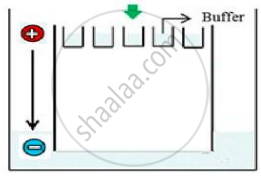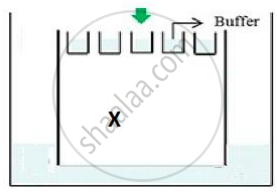Advertisements
Advertisements
प्रश्न
Would you choose an exonuclease while producing a recombinant DNA molecule?
उत्तर
No, as exonuclease acts on the free ends of linear DNA molecule. Therefore, instead of producing DNA fragments with sticky ends, it will shorten or completely degrade the DNA fragment containing the gene of interest, and the circular plasmid (vector) will not get cut as it lacks free ends.
APPEARS IN
संबंधित प्रश्न
Why is the enzyme cellulase needed for isolating genetic material from plant cells and not form the animal cells?
Do eukaryotic cells have restriction endonucleases? Justify your answer.
Answer the following question.
Write the use of restriction endonuclease in the formation of recombinant DNA.
The DNA fragment separated on an agarose gel can be visualized by staining with ______.
While isolating DNA from bacteria, which of the following enzymes is not required?
Which of the following bacteria is not a source of restriction endonuclease?
Restriction enzymes that are used in the construction of recombinant DNA are endonucleases which cut the DNA at ‘specific-recognition sequence’. What would be the disadvantage if they do not cut the DNA at specific-recognition sequence?
A plasmid DNA and a linear DNA (both are of the same size) have one site for a restriction endonuclease. When cut and separated on agarose gel electrophoresis, plasmid shows one DNA band while linear DNA shows two fragments. Explain.
Carefully observe the given picture. A mixture of DNA with fragments ranging from 200 base pairs to 2500 base pairs was electrophoresed on agarose gel with the following arrangement.

(a) What result will be obtained on staining with ethidium bromide? Explain with reason.
(b) The above setup was modified and a band with 250 base pairs was obtained at X.

What change(s) were made to the previous design to obtain a band at X? Why did the band appear at position X?
State the principle involved in separation of DNA fragments using gel electrophoresis.
